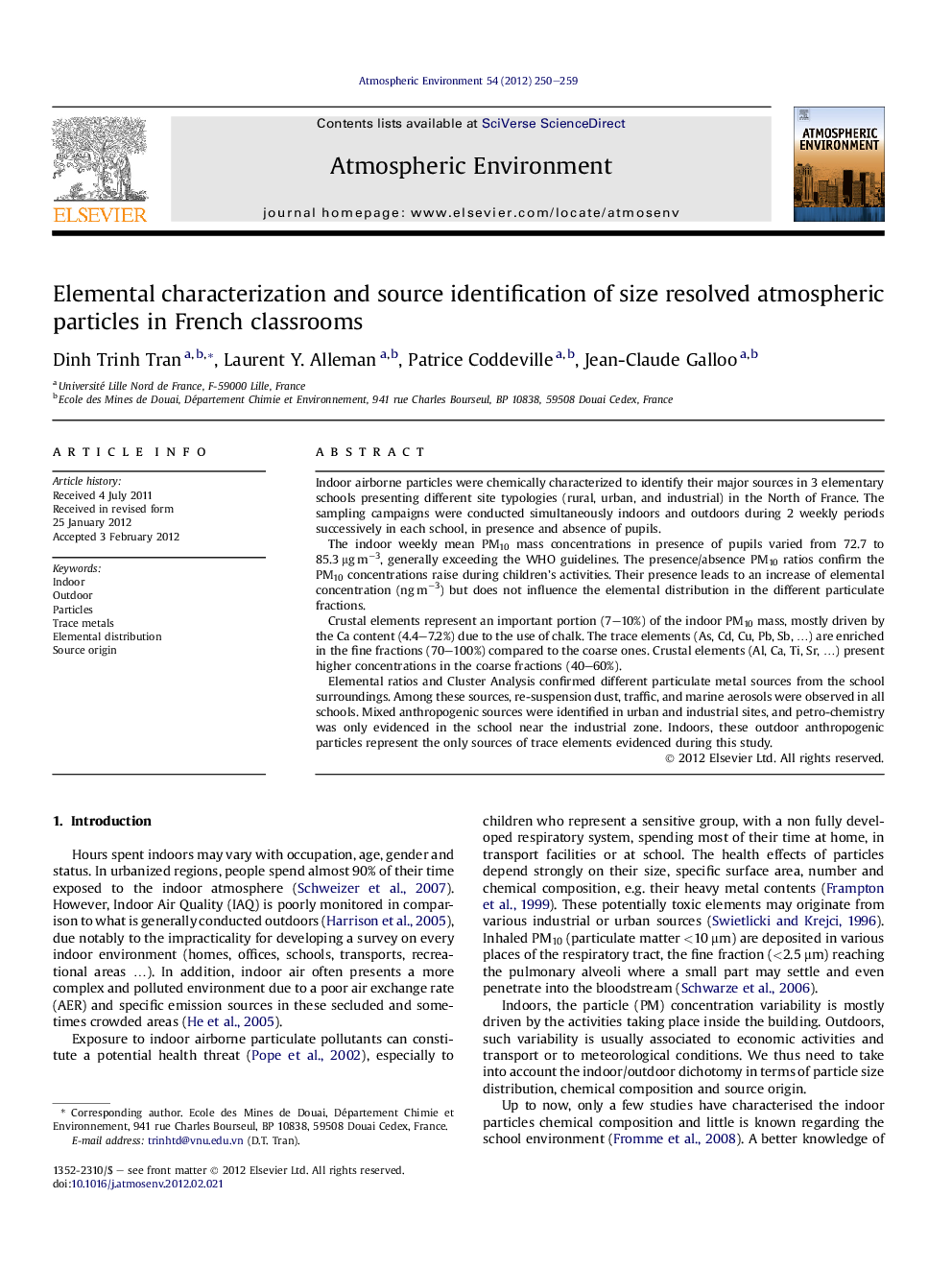| Article ID | Journal | Published Year | Pages | File Type |
|---|---|---|---|---|
| 4438793 | Atmospheric Environment | 2012 | 10 Pages |
Indoor airborne particles were chemically characterized to identify their major sources in 3 elementary schools presenting different site typologies (rural, urban, and industrial) in the North of France. The sampling campaigns were conducted simultaneously indoors and outdoors during 2 weekly periods successively in each school, in presence and absence of pupils.The indoor weekly mean PM10 mass concentrations in presence of pupils varied from 72.7 to 85.3 μg m−3, generally exceeding the WHO guidelines. The presence/absence PM10 ratios confirm the PM10 concentrations raise during children’s activities. Their presence leads to an increase of elemental concentration (ng m−3) but does not influence the elemental distribution in the different particulate fractions.Crustal elements represent an important portion (7–10%) of the indoor PM10 mass, mostly driven by the Ca content (4.4–7.2%) due to the use of chalk. The trace elements (As, Cd, Cu, Pb, Sb, …) are enriched in the fine fractions (70–100%) compared to the coarse ones. Crustal elements (Al, Ca, Ti, Sr, …) present higher concentrations in the coarse fractions (40–60%).Elemental ratios and Cluster Analysis confirmed different particulate metal sources from the school surroundings. Among these sources, re-suspension dust, traffic, and marine aerosols were observed in all schools. Mixed anthropogenic sources were identified in urban and industrial sites, and petro-chemistry was only evidenced in the school near the industrial zone. Indoors, these outdoor anthropogenic particles represent the only sources of trace elements evidenced during this study.
► Children's activities in classroom increase mainly the PM2.5–10 mass fraction. ► Their activities clearly impact major elements due to chalk dusts. ► The presence of children impact the elemental content, not the elemental distribution. ► Indoor trace elements originate essentially from outdoor sources.
